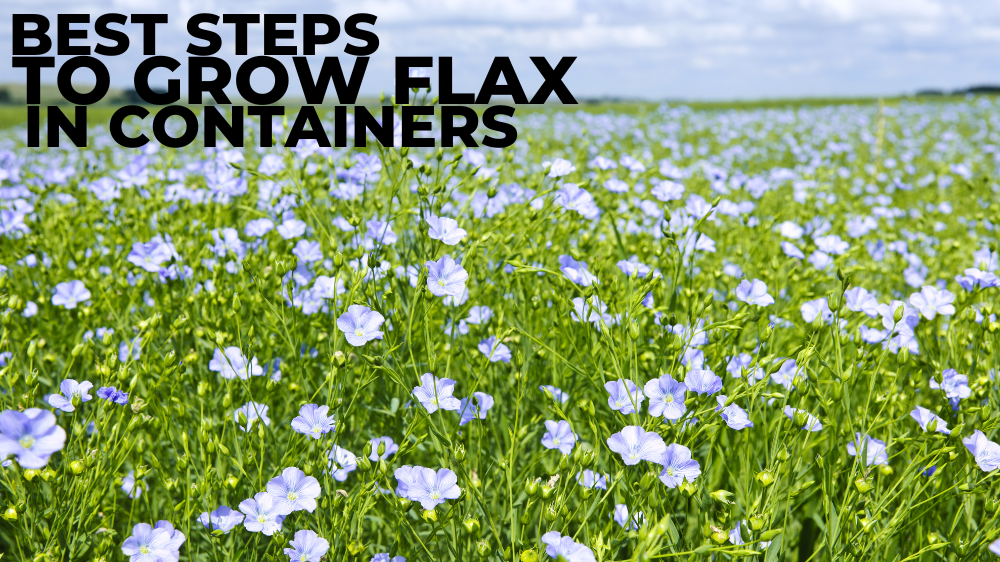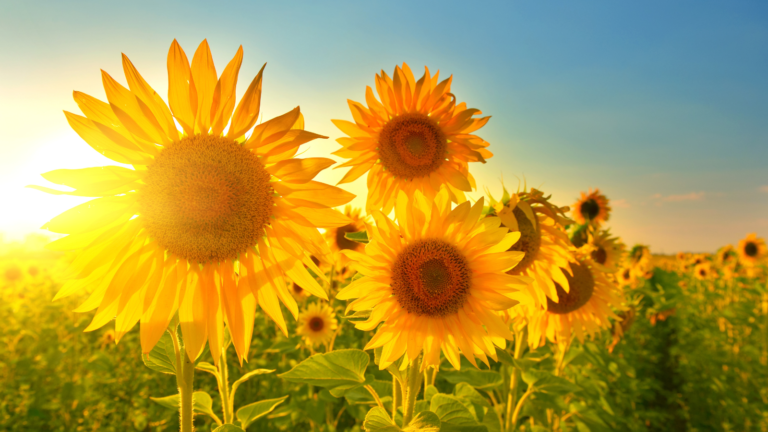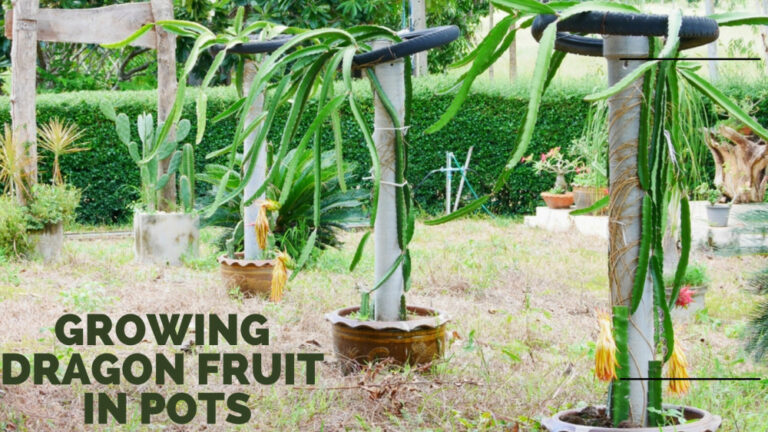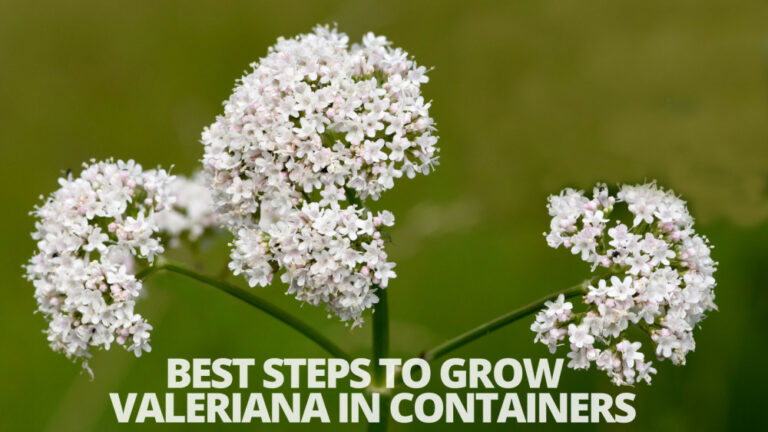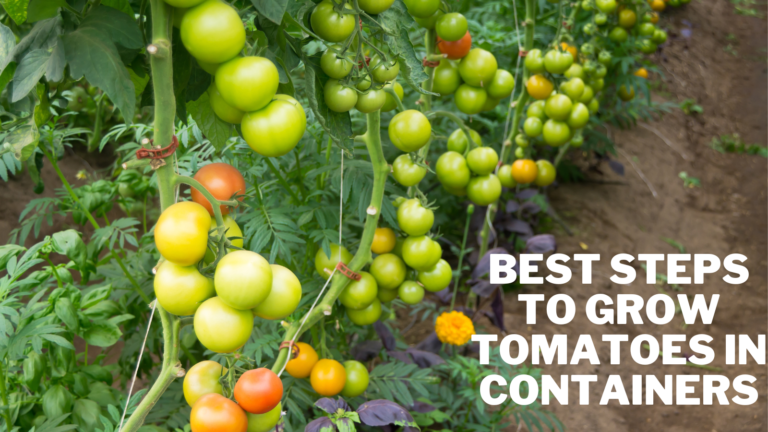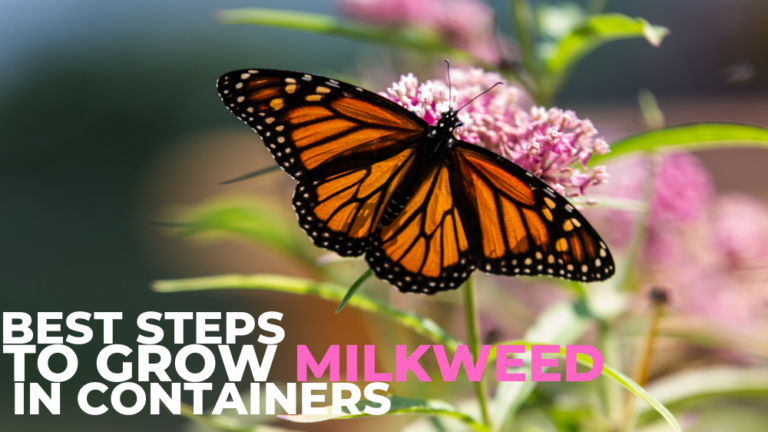Best Steps To Grow Flax In Containers
Best Steps To Grow Flax In Containers
Flax is one of the world's most valuable plants. Its seeds are edible and used in cooking and medicine, its stalks are used to make textile fibres, and its blossoms are beautiful.
Flax can be grown both indoors and outdoors. Flax is a hardy plant cultivated in pots or gardens. So, let’s start to grow flax in containers.
History & Origin Flax
The Neolithic people relied on various plants and animals to ensure their life. They learned about these resources through observation, experimentation, and information from their ancestors.
Increased familiarity with these sources of food, fiber, and medicine laid the groundwork for pastoral and arable agriculture; indeed, the Neolithic agricultural revolution was a watershed moment.
There have been 500 human generations since that time (about 10,000 years ago).
There is widespread consensus that modern cultivated flax is most closely related to wild L. Angustifolia, a wild progenitor found in the Mediterranean Basin, North Africa, the Near East, Iran, Caucasia, and Western Europe.
Other Linum L. species can be found throughout the steppe. Flax is a foundation crop of modern civilization because it was one of the first cultivated plants.
It reacted well to early domestication efforts, as demonstrated by a considerable increase in seed size, increased oil yield, and a longer stem and seed boll that did not easily dehisce (burst open, releasing the seeds).
These enormous genetic alterations were critical in flax achieving a dominant position in Neolithic people's economic, social, religious, and political life and positioning it for a future inextricably linked with human civilization.
The Indian subcontinent has the highest biological diversity within the genus Linum, and scholars feel that this is the most likely site for the botanical origin of our modern cultivated flax.
The Indus Valley was an early commerce route connecting India and the Middle East.
Another school of thought holds that flax originated in Western Persia (Iran) and expanded to other nations considered early flax production areas – India, China, and Central Asia, then west and south, especially to Babylon (Iraq) and Egypt.
Types Of Flax
Linum Lewisii, Linum perenne, Linum Narbonense, Linum Flavum, Linum grandiflorum, and Linum Perenne Alpinum are the most common perennial flax blooms.
They are pretty popular due to their numerous health advantages and vivid colours.
1. Linum Perenne
Linum Perenne is a perennial flax plant often known as Blue Flax or Lint. It is a flowering plant that belongs to the Linaceae family.
It is native to Europe, specifically England and the Alps. The North American Linum Lewisii species is frequently confused with the Blue Flax.
However, it is a species of the perennial flax family. The herbaceous plant can reach a height of 60 cm.
It has 1-2½ cm long leaves spirally arranged around the stem. The plant's flowers are pale blue with golden centers and are excellent for ornamental use. Each flower has five petals and is 2-2½ cm across.
2. Linum Grandiflorum
A flowering plant called Linum Grandiflorum is also known as Scarlett Flax, Crimson Flax, or Red Flax.
The plant is originally from Algeria, though introduced and becoming naturalized in southern Europe, northern Africa, and North America.
The herbaceous plant has 1-2 cm long, waxy lance-shaped leaves. Up to five vividly red petals make up each blossom, which is beautiful in just about any garden.
They have stamens with pointed anthers and pollen that is a light blue tint. Rubrum, a variety of salmon-coloured flowers, was developed by some breeding programs.
On the other hand, Bright Eyes has white flowers with red streaks in the center.
3. Linum Alpinum
A tiny, well-known Blue Flax blossom is the Alpine Flax flower. It works well as an edging or border plant and is frequently used in rock gardens.
It produces a bushy pile of tiny green fern-like leaves and thrives in direct sunlight.
They can withstand drought and are also resistant to deer and rabbits. The leafy tuft is abundant with blossoms that last for several weeks. The soft blue colour of the blossom is ideal for cosmetic reasons.
For the plants to blossom again by late October, you can cut them in mid-summer. They typically have a short life cycle, but if you promote self-seeding, you can enjoy them in the garden for longer.
4. Linum Flavum
Common names for Linum Flavum include Golden Flax and Yellow Flax. Southern and central Europe is the native home of the blooming plant.
The woody perennial plant can reach heights of 12 inches and widths of 8 inches. The terminal cluster of vivid yellow blooms contrasts beautifully with the semi-evergreen plant's dark green foliage.
The Latin word “flavum” also means “pure yellow.” An average flower has five petals. The plant grows well in direct sunlight when planted in finely drained soil. It thrives in dry soils, ideal for rock or alpine gardens.
5. Linum Perenne Sapphire
Due to its long bloom time, Sapphire Blue Flax is a trendy flax flower. Because it is particularly cold and hardy, it is frequently utilized in colder climates.
The plant is highly drought-resistant. Growers can re-seed and naturalize the bloom in grassy meadows and flower beds at home.
The plant can reach a height of 12-15 inches and a width of 18 inches. The sky-blue blossoms make it a favorite wildflower in the United States.
It is suitable for USDA hardiness zones 3-9, meaning it may be planted almost anywhere in the United States.
The plant grows best in full sunlight, although it does well in the morning sun and afternoon shade.
6. Linum Perenne Appar
Linum Perenne Appar is frequently referred to as Appar Blue Flax. It is dwarf-sized blue flax with stunning bright blue blooms.
The blossoms last for several months, from late spring through early summer. It thrives in poor soils and arid climates, making it a low-maintenance plant.
True blue is ideal for gardens and meadows throughout the Western region.
It originated in the Black Hills of South Dakota and has been developed via breeding and genetic modification.
Because it is a powerful re-seeder, it self-seeds and naturalizes in practically any condition.
Because the plant is exceptionally cold tolerant, it has been found in frigid locations such as the Rockies and the Great Plains.
7. Linum Lewisii
Linum lewisii is sometimes called the Prairie flower (pronounced LY-num loo-ISS-ee-eye). Meriwether Lewis discovered it, and it was named after him.
The perennial plant is a member of the Linaceae family. It is indigenous to North America, ranging from Baja, California to Alaska.
It can be found in various environments, including dry slopes and hills. The herbaceous plant is thin and can reach a height of 80cm.
It has narrow lanceolate green leaves that spiral around the stem. The little green foliage complements the stunning lavender or pastel blue to white flowers.
As the plant ages, it may begin to lose its leaves. Instead of erect, the L. Lewisii blossom leans at an angle.
8. Linum Narbonense
The perennial flax flower is another name for the Linum narbonense flower.
This native European plant has spread naturally throughout America and is frequently utilized for oil production, ornamentation, and health advantages.
The plant can reach 1-2½ feet tall and 1 foot wide. Around 10 blue blossoms can be harvested from a single stalk.
The bloom typically has around five petals and is a large, showy 2-2½ cm in diameter. Unlike most perennial flax blooms, the slender, grayish-green leaves are grouped in whorls.
Early in the summer, the plant makes attractive teardrop-shaped buds, which later unfold into flowers. Seeds for the Linum Narbonense plant often start within six to eight weeks before the final frost in gardens.
Once the soil is suitable for planting, you can also do it outside in the early spring. Since it takes the seeds 14 to 30 days to germinate, you can have young seedlings by the end of spring.
Grow Flax In Containers
Flax is one of the world's most useful plants. Its seeds are edible and used in cooking and medicine, its stalks are used to make textile fibres, and its blossoms are beautiful.
Flax can be grown both indoors and outdoors. Flax is a hardy plant cultivated in pots or in the garden.
To reap the various advantages of this plant, learn how to grow it by following the instructions below.
Choose the Right Container
Choose a pot with 10 inches of depth and adequate drainage holes. Look for short-growing kinds, as flax can grow from 12 to 36 inches tall.
Planting flax seeds from the bulk department of the grocery store is simple. Flax grows well in the ground and containers and is an excellent choice for a tiny space or container garden. These plants will thrive with decent mulch and daily watering.
Soil To Grow Flax in Containers
New Zealand flax is not picky about soil; it will thrive in poor soil as long as it is well-drained.
It favours slightly acidic soil but will grow in neutral soil as well. Rich potting mix is preferred over regular potting mix when growing in containers.
How To Grow
There are two primary species of flax: P. Tenax (Harakeke) and P. cooking (Wharariki), and numerous cultivars of each species grow to various sizes.
While dwarf types (35-75 cm tall) need a small pot, larger growing cultivars (2-3m tall) will need a large pot (at least 1m wide) (30-50cm wide).
- Fill with high-quality potting soil, such as Yates Premium Potting Mix, and place in full sun to partial shade.
- Gently pluck the roots of the plant after removing them from the container.
- Place in the hole, then gradually firm up the backfill. Well, with water.
- Depending on the weather, water deeply once or twice per week.
- Apply Yates Thrive All Purpose Liquid Plant Food during the growth season. Apply Yates Thrive Fish Blood & Bone Plant Food Concentrate throughout the year.
Planting
For growing flax, fill your container with high-quality soil. The seeds should be sown at least one inch deep.
Wait until the end of the final frost to plant the seeds if you reside in a cold environment.
Frost will prevent the seeds from sprouting and your plant from growing. After seeding, germination typically takes three weeks to occur.
Choosing a sunny, uncluttered location is the first step in producing flax in gardens. Remove any weeds, clay, or debris from the soil.
Once the planting area is prepared, check the soil's temperature to see if it is suitable for growing flax. If so, then you can begin planting the seeds.
Sunlight
Flax prefers full sun but may grow in light shade. Full sun is not required because it is often planted for its foliage. Hybrids may benefit from afternoon shade in hotter regions to improve leaf colour.
Water
The water requirements of flax are medium. One inch of water per week from rainfall and irrigation is excellent when planted in the garden.
Plants in containers should be maintained regularly moist but not soggy.
Temperature & Humidity
In USDA, cold hardiness zones 9 to 11 are consistently hardy and evergreen; however, gardeners in zones 7 and 8 may discover that the plants re-grow each spring after dying back if they are heavily mulched and protected over the winter.
They are typically grown as potted plants by cold-weather gardeners, who then transfer them indoors for the winter.
Fertilizer
Since these plants can endure poor soil, they typically don't need a lot of food. A well-rotted compost top dressing applied annually can aid in retaining soil moisture and supplying nutrients.
Pruning
Fall is the ideal season for flax pruning. Start by removing any leaves that are dead, dying, or ill. At the root, cut them off.
If winter temperatures have perished or harmed any leaves, trim once again in the spring. This might not be the case if it seems like a cold snap has damaged the entire plant.
Give the plant time after cutting it to the ground; the roots may still be in good condition.
Propagating
Flax clumps can eventually become fairly huge and congested when cultivated in a garden.
By splitting them, you can create new plants for your garden or offer gifts while also organizing an existing one. This is how you do it:
- Use a shovel to remove the entire plant from the ground in the spring. Move it in sections if it's too large to move all at once.
- Shake off any extra soil to help divide the cluster into more manageable pieces.
- Use pruners or shears to reduce the leaf length to around six inches. When you replant the plants, this stops them from tipping over.
- You have two options: immediately replant each chunk in a different spot or start new plants by potting smaller pieces into individual containers with new potting soil and letting them develop for a month or two before replanting them into the garden.
- Keep the newly planted New Zealand flax well-watered until you notice new growth.
Potting And Repotting
Container gardening is a simple way to grow phormium tenax. In the summer heat, keep the plant well-watered and choose a rich, organic mix rather than conventional potting soil.
However, avoid letting the plant remain in moist soil for too long. Keep the plants from getting frosty. This plant prefers cool temperatures and lots of light when overwintered inside.
Overwintering is not a problem for it in its cold, hard zones. In gardening zones 7 through 9, colder temperatures may cause plants to wither and perish.
Cover the bed with a thick layer of mulch to protect the plant until it recovers in warmer temperatures.
Growing Tips
Remove any aging or broken leaves to maintain the plant looking its best. This plant can be easily propagated through division by gently removing it from the ground or the pot and separating it into clumps with a spade in late autumn.
Excellent for usage around swimming pools or beachfront residences, as well as in heavy pollution locations.
Flax can withstand brief droughts, but prolonged heat and a lack of water can turn the tips of the leaves brown and make them appear scruffy.
Numerous cultivars offer a variety of leaf colours, including yellow, green, bronze, red, pink, and deep purple, in addition to attractive variegated forms.
Create a tall, contrasting colour using a highlight plant in pots or along borders.
Pests & Diseases Of Flax
Mealybugs are difficult to eradicate from inside plants' long leaves, where they might infest them. Sometimes, it's simplest to throw away the infected plant. Fungus leaf spots may also damage the leaves.
When grown indoors, these plants are sensitive to many typical pests, such as mites and whiteflies, that attack other houseplants. The first treatments for these pests are horticultural soaps and oils.
Harvesting Flax
Usually, 30 days into the flowering period, the flax plant is ready for harvest. Harvest it as soon as the stalks turn yellow and the seed pods are getting big and ready to burst.
Typically, the plant is ready for harvest 100 days after the seed is sown. Mother Earth Living covers how to collect and process flax in great detail!
Conclusion
The abundant, day-long flowers of the cup-shaped flax flower, which is an annual but can also be a perennial, bloom from May through September.
Flax can grow up to 2 feet (1 m) tall at maturity. If you face any problems growing flax in containers, please comment here.
I trust you enjoyed this article on the Best Steps To Grow Flax In Containers. Please stay tuned for more blog posts to come shortly. Take care!
JeannetteZ
>>>Please click here to read my all-inclusive article about Container Gardening<<<
>>>Are you interested in homegrown herbs and medicine? Please click here to find out more about it!<<<
Your Opinion Is Important To Me
Thoughts? Ideas? Questions? I would love to hear from you. Please leave me your questions, experience, and remarks about this article on the Best Steps To Grow Flax In Containers in the comments section below. You can also reach me by email at Jeannette@Close-To-Nature.org.
Disclosure
This post may contain affiliate links. As an Amazon Associate and other affiliate programs, I earn from qualifying purchases at no extra cost to you. Read my full affiliate disclosure.
You might also enjoy these blog posts:
Best Steps To Grow Cauliflower In Containers
Best Steps To Grow Lentils In Containers
Best Steps To Grow Zucchini In Containers
Best Steps To Grow Pumpkins In Containers
Best Steps To Grow Kiwi In Containers

